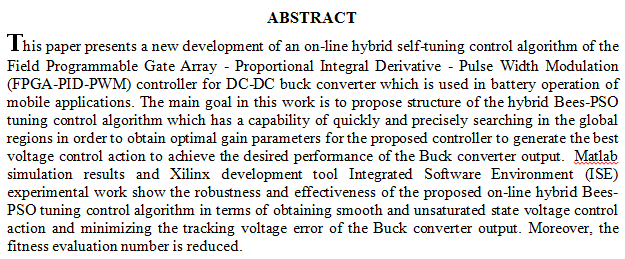
he effect of different cultural conditions on production of bioemulsifier from Serratia marcescens S10 was determined; different carbon and nitrogen sources were used such as: different oils include: edible (vegetable) oils (olive oil, sesame oil, sun flower oil and corn oil) and heavy oils (oil 150, oil 60, oil 40) as carbon sources and (NH4Cl, casein, (NH4)2SO4, peptone, tryptone, gelatin and yeast extract) as nitrogen sources were added to production media. Bioemulsifier was estimated by measuring the surface tension (S.T), emulsification activity (E.A) and emulsification index (E24%). The best results of bioemulsifier production from Serratia marcescens S10 were obtained at pH8 and incubated at 37ºC for 5days, using sesame oil
... Show More (1)
(1)
Captopril is an angiotensin converting enzyme inhibitor (ACEI) used to treat hypertension,
congestive heart failure, and myocardial infraction.
The only dosage form available for captopril is the plain tablet in strength of 12.5,25,50 and 100mg
tablet.
This investigation is concerned with factors affecting the formulation of captopril as a plain
tablet dosage form of 50mg. Many trials were made to prepare satisfactory tablets for the drug by
using wet – granulation methods with various additives. It was found that poly vinyl pyrrolidone
(P.V.P.) as binder gave the most satisfactory tablets. At the same time a shorter disintegrantion time
and slower dissolution rate were obtained with the addition of starch
Several types of laser are used in experimental works in order to study the effects of laser on blood vessel. They differ from each other by a lot of properties mainly in wavelength, energy of the laser and pulse duration. In this study argon laser (488 nm- 514 nm) and continuous Nd: YAG laSer (1064 nm), have been applied to 50 samples of sheep blgod tesselS. Histologically, tha results of the study were different According to the txpe of L`sar used; apgon larer had distrabtave effects on $he blood vessal while continuous Nd: YAG laser Appeaped to be the safesd one on the blmod vessel architecture. This study concluded that argoj laser has da-aging ef&ect on
... Show More (1)
(1)
This work presents a five-period chaotic system called the Duffing system, in which the effect of changing the initial conditions and system parameters d, g and w, on the behavior of the chaotic system, is studied. This work provides a complete analysis of system properties such as time series, attractors, and Fast Fourier Transformation Spectrum (FFT). The system shows periodic behavior when the initial conditions xi and yi equal 0.8 and 0, respectively, then the system becomes quasi-chaotic when the initial conditions xi and yi equal 0 and 0, and when the system parameters d, g and w equal 0.02, 8 and 0.09. Finally, the system exhibits hyperchaotic behavior at the first two conditions, 0 and 0, and the bandwidth of the chaotic
... Show More (2)
(2)
Brainstorming has been a common approach in many industries where the result is not always accurate, especially when procuring automobile spare parts. This approach was replaced with a scientific and optimized method that is highly reliable, hence the decision to optimize the inventory inflation budget based on spare parts and miscellaneous costs of the typical automobile industry. Some factors required to achieve this goal were investigated. Through this investigation, spare parts (consumables and non-consumables) were found to be mostly used in Innoson Vehicle Manufacturing (IVM), Nigeria but incorporated miscellaneous costs to augment the cost of spare parts. The inflation rate was considered first due to the market's
... Show More (3)
(3)
 (18)
(18)
 (14)
(14)
Vapor-liquid equilibrium data are presented for the binary systems n-hexane - 1-propanol, benzene - 1-propanol and n-hexane – benzene at 760 mm of mercury pressure. In addition ternary data are presented at selected compositions with respect to the 1-propanol in the 1-propanol, benzene, n-hexane system at 760 mmHg. The results indicate the relative volatility of n-hexane relative to benzene increases appreciably with addition of 1-propanol.
 (51)
(51)
 (55)
(55)
A Laced Reinforced Concrete (LRC) structural element comprises continuously inclined shear reinforcement in the form of lacing that connects the longitudinal reinforcements on both faces of the structural element. This study conducted a theoretical investigation of LRC deep beams to predict their behavior after exposure to fire and high temperatures. Four simply supported reinforced concrete beams of 1500 mm, 200 mm, and 240 mm length, width, and depth, respectively, were considered. The specimens were identical in terms of compressive strength ( 40 MPa) and steel reinforcement details. The same laced steel reinforcement ratio of 0.0035 was used. Three specimens were burned at variable durations and steady-state temperatures (one
... Show More (6)
(6)
 (4)
(4)
